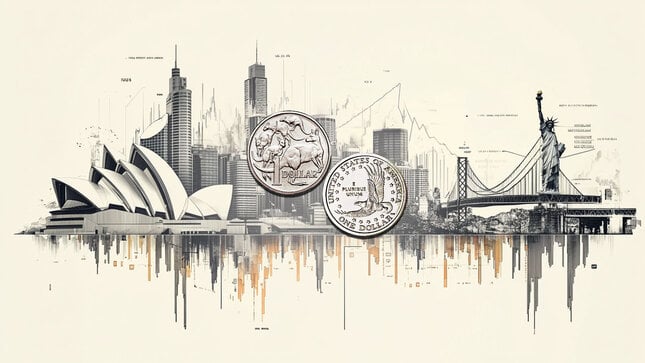- USD/CAD edges lower amid thin trading volumes ahead of the New Year holiday.
- The US Dollar may appreciate due to the rising hawkish outlook for the Fed’s interest rates next year.
- The commodity-linked CAD gains ground amid improved crude Oil prices.
USD/CAD breaks its three-day winning streak, trading around 1.4400 during the European hours on Monday. The USD/CAD pair loses ground as US Dollar (USD) holds losses amid thin trading volumes ahead of the New Year holiday.
Markets continue to process the US Federal Reserve’s (Fed) hawkish stance, which could provide support for the US Dollar and the USD/CAD pair. The Fed reduced its benchmark interest rate by 25 basis points at the December meeting, the latest Dot Plot projections signal only two rate cuts in 2025, reinforcing cautious sentiment.
Fed Chair Jerome Powell said earlier this month that Fed officials "are going to be cautious about further cuts" after an as-expected quarter-point rate reduction. The Fed’s hawkish message is likely to support the US Dollar (USD) and act as a tailwind for the USD/CAD pair in the near term.
Traders broadly anticipate that the incoming administration of President-elect Donald Trump will implement tax cuts, tariffs, and deregulation, measures expected to fuel inflation. This could prompt the US central bank to adjust its outlook for the upcoming year.
Additionally, the commodity-linked Canadian Dollar (CAD) receives support from improved crude Oil prices, given Canada is the largest Oil exporter to the United States (US). West Texas Intermediate (WTI) Oil price continues to gain ground for the second successive day, trading around $70.20 per barrel at the time of writing.
However, the potential rise in crude Oil prices might be limited as the market shifts its attention to the 2025 demand outlook. Projections of an oversupplied market next year could hinder the Organization of the Petroleum Exporting Countries and its allies' (OPEC+) efforts to resume idled production. Furthermore, uncertainties surrounding future demand from China, the world’s largest Oil importer, could add additional downward pressure on crude Oil prices.
Canadian Dollar FAQs
The key factors driving the Canadian Dollar (CAD) are the level of interest rates set by the Bank of Canada (BoC), the price of Oil, Canada’s largest export, the health of its economy, inflation and the Trade Balance, which is the difference between the value of Canada’s exports versus its imports. Other factors include market sentiment – whether investors are taking on more risky assets (risk-on) or seeking safe-havens (risk-off) – with risk-on being CAD-positive. As its largest trading partner, the health of the US economy is also a key factor influencing the Canadian Dollar.
The Bank of Canada (BoC) has a significant influence on the Canadian Dollar by setting the level of interest rates that banks can lend to one another. This influences the level of interest rates for everyone. The main goal of the BoC is to maintain inflation at 1-3% by adjusting interest rates up or down. Relatively higher interest rates tend to be positive for the CAD. The Bank of Canada can also use quantitative easing and tightening to influence credit conditions, with the former CAD-negative and the latter CAD-positive.
The price of Oil is a key factor impacting the value of the Canadian Dollar. Petroleum is Canada’s biggest export, so Oil price tends to have an immediate impact on the CAD value. Generally, if Oil price rises CAD also goes up, as aggregate demand for the currency increases. The opposite is the case if the price of Oil falls. Higher Oil prices also tend to result in a greater likelihood of a positive Trade Balance, which is also supportive of the CAD.
While inflation had always traditionally been thought of as a negative factor for a currency since it lowers the value of money, the opposite has actually been the case in modern times with the relaxation of cross-border capital controls. Higher inflation tends to lead central banks to put up interest rates which attracts more capital inflows from global investors seeking a lucrative place to keep their money. This increases demand for the local currency, which in Canada’s case is the Canadian Dollar.
Macroeconomic data releases gauge the health of the economy and can have an impact on the Canadian Dollar. Indicators such as GDP, Manufacturing and Services PMIs, employment, and consumer sentiment surveys can all influence the direction of the CAD. A strong economy is good for the Canadian Dollar. Not only does it attract more foreign investment but it may encourage the Bank of Canada to put up interest rates, leading to a stronger currency. If economic data is weak, however, the CAD is likely to fall.
Information on these pages contains forward-looking statements that involve risks and uncertainties. Markets and instruments profiled on this page are for informational purposes only and should not in any way come across as a recommendation to buy or sell in these assets. You should do your own thorough research before making any investment decisions. FXStreet does not in any way guarantee that this information is free from mistakes, errors, or material misstatements. It also does not guarantee that this information is of a timely nature. Investing in Open Markets involves a great deal of risk, including the loss of all or a portion of your investment, as well as emotional distress. All risks, losses and costs associated with investing, including total loss of principal, are your responsibility. The views and opinions expressed in this article are those of the authors and do not necessarily reflect the official policy or position of FXStreet nor its advertisers. The author will not be held responsible for information that is found at the end of links posted on this page.
If not otherwise explicitly mentioned in the body of the article, at the time of writing, the author has no position in any stock mentioned in this article and no business relationship with any company mentioned. The author has not received compensation for writing this article, other than from FXStreet.
FXStreet and the author do not provide personalized recommendations. The author makes no representations as to the accuracy, completeness, or suitability of this information. FXStreet and the author will not be liable for any errors, omissions or any losses, injuries or damages arising from this information and its display or use. Errors and omissions excepted.
The author and FXStreet are not registered investment advisors and nothing in this article is intended to be investment advice.
Recommended content
Editors’ Picks

Gold price sits at fresh record high above $3,070 amid Trump's tariff plans
Gold price sits at fresh all-time peak above $3,070 early Friday as escalating global trade tensions, the uncertainty over Trump's reciprocal tariffs, and the risk-off mood continue to drive safe-haven flows. Bets that the Fed will resume its rate-cutting cycle soon lend additional support to the bullion.

USD/JPY stays weak below 151.00 after hot Tokyo CPI; US PCE awaited
USD/JPY keeps the selling pressure intact below 151.00 in late Asian trading on Friday. Hot Tokyo CPI figures and BoJ's March Summary of Opinions ramp up BoJ rate hike bets, supporting the Japanese Yen. Meanwhile, tariff jitters undermine the US Dollat, bolstering the haven demand for the Yen. US PCE eyed.

AUD/USD drops below 0.6300 amid trade war fears
AUD/USD drops back below 0.6300 in Friday's Asian trading, undermined by broad risk-aversion due to US President Trump's latest auto tariffs announcements. Traders now look to the US PCE Price Index for some meaningful impetus. Hopes for more stimulus from China could cap the Aussie's decline.

Bitcoin stabilizes while Ethereum and Ripple show weakness
Bitcoin price stabilizes at around $87,000 on Friday, as its RSI indicates indecisiveness among traders. However, Ethereum and Ripple show signs of weakness as they face resistance around their key levels and face a pullback this week.

US: Trump's 'Liberation day' – What to expect?
Trump has so far enacted tariff changes that have lifted the trade-weighted average tariff rate on all US imports by around 5.5-6.0%-points. While re-rerouting of trade will decrease the effectiveness of tariffs over time, the current level is already close to the highest since the second world war.

The Best brokers to trade EUR/USD
SPONSORED Discover the top brokers for trading EUR/USD in 2025. Our list features brokers with competitive spreads, fast execution, and powerful platforms. Whether you're a beginner or an expert, find the right partner to navigate the dynamic Forex market.